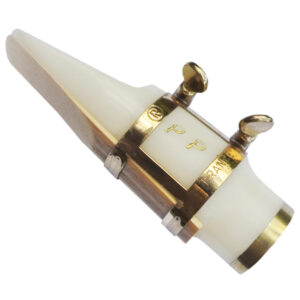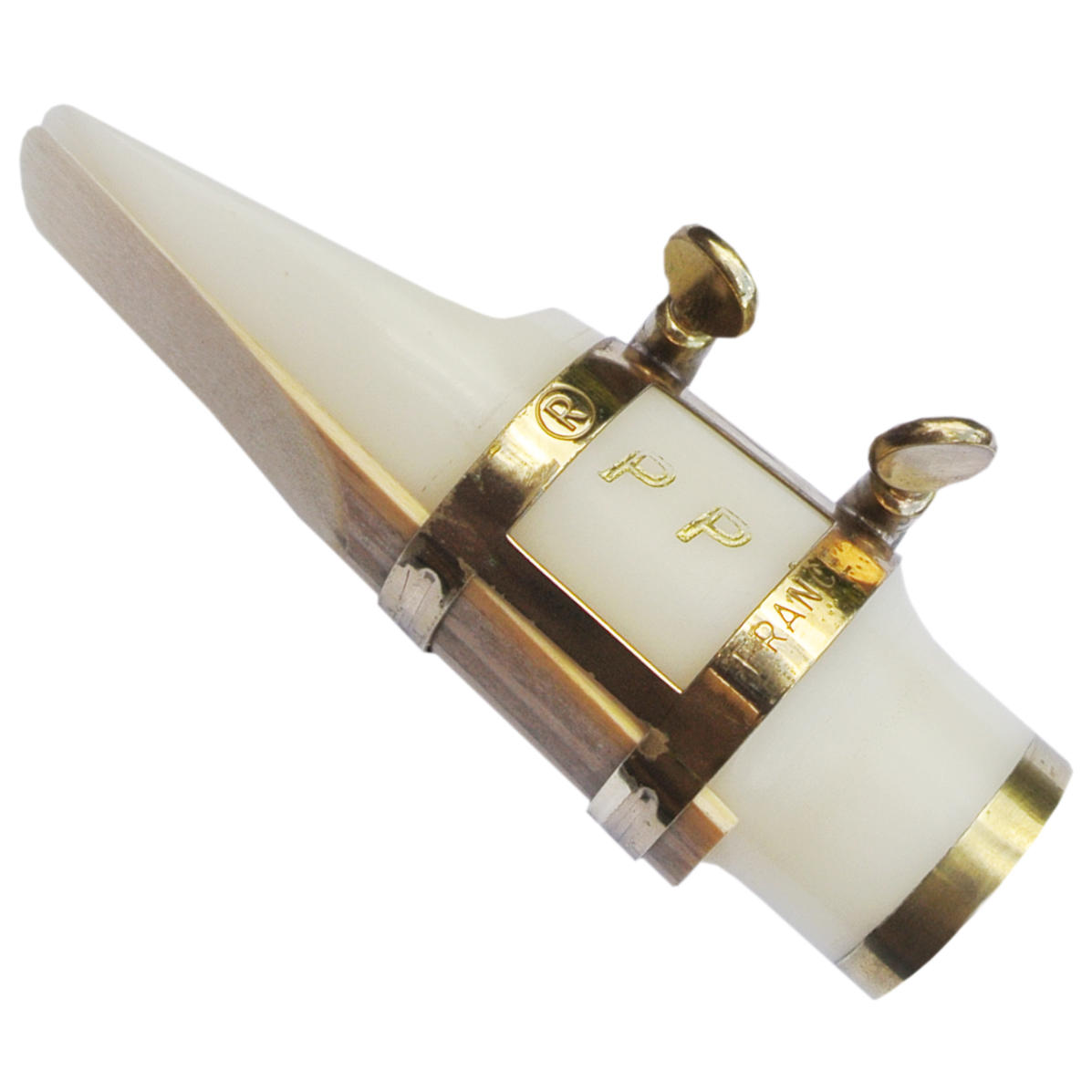Mouthpiece and reed for a big fat loud sound
In this article we are mainly going to focus on how a mouthpiece design can influence the sound. It is easy to confuse a loud sound with a big sound, they are not always the same thing.
Apart from you, the player, your mouthpiece and reed combination are probably the most important factor involved in shaping your sound. We already looked at how mouthpiece material is not a significant factor (contrary to some popular opinion) so what is it about a mouthpiece that can help shape your sound?
There are two main aspects to look at here, loudness (including dynamic range) and tone. We all know what tone is, even though we may have differing opinions about describing it or what constitutes a good tone, but loudness is surprisingly not so simple. Before we get on to looking at how you choose a mouthpiece, first of all let’s think about loudness.
What is so complicated about loudness then?
 You’d think we all know what loudness is. Surely we can easily measure in decibels how loud something is. In fact loudness is subjective, it’s what people perceive to be loud or quiet, and is not easy to measure. What we can measure (in decibels) is sound pressure. People can actually perceive different frequencies (at the same level of decibels) as more, or less, loud.
You’d think we all know what loudness is. Surely we can easily measure in decibels how loud something is. In fact loudness is subjective, it’s what people perceive to be loud or quiet, and is not easy to measure. What we can measure (in decibels) is sound pressure. People can actually perceive different frequencies (at the same level of decibels) as more, or less, loud.
A saxophone sound is made up of many overtones so contains many frequencies. In general the human hearing system (ie ears plus brain) is most sensitive to sounds between 2 and 5 kHz – these are probably what we might term the brighter frequencies – below that we might think of the sound being warmer, darker or bassier. As people get older they are less sensitive to higher frequencies. This means a mouthpiece designed to exaggerate certain overtones can appear to be louder in general, but may vary from person to person.
Here are few things about loudness that we might want to consider.
When might you need loudness?
Obviously you want to be louder when you think you cannot be heard. If you are recording, or play in a band with a good sound reinforcement amplification system, then this may not be an issue at all. In that case all you need worry about in regard to mouthpiece and reed setup is that it sounds good, or gets the sound you want.
But it becomes more important if you play:
- in an acoustic situation in an ensemble
- on stage where there may be amplification but it seems to be favouring every instrument except the saxophone (sounds familiar?).
Then you will need to make sure you are loud enough to be heard and (most importantly) that you can also control your dynamics so can be quiet enough to blend when necessary.
Loud can sound better
This is something to consider when trying out a new mouthpiece. Although we often like to think we can enjoy music with a wide dynamic range, and that is a good thing as it is an important factor in our enjoyment of the music, there is no getting way from the fact that loud music (up to a point) tends to sound better than quieter music. Tests have been carried out where people listen to a piece of music at different sound levels. Even though level may be an imperceptible 2 decibels louder it is perceived as having a better “quality.” (Something to be aware of also when buying hifi speakers)
Loudness may or may not increase dynamics
So you need a loud mouthpiece and reed setup? Great that is not difficult. However there can be obvious problems if it means everything is louder and so you are unable to play quietly. This is a problem we often get when someone simply slaps on a hard reed or gets a huge tip opening (see below) in order to play louder. It is often at the expense of quiet notes, especially low down on the instrument where the conical bore of a saxophone means that low notes are harder to play at low volumes. More of this later.
So what makes a big sound?
We mentioned above that brighter frequencies(2 – 5kHz) are the ones that the human brain is most sensitive to, and so processes them as sounding louder than frequencies below that. But what do we think of as a big sound? We often think of a sound with more lower frequencies (as you might get with subtone playing) as a big sound, but big can also include a sound with a very wide spread of frequencies, both low and high.
How can mouthpiece size and reed strength affect your tone or sound?
First a note about mouthpiece tip size:
It’s a common fallacy that tip opening alone is a useful measurement in regard to how resistant a mouthpiece seems or how loud it might play or how big a sound. Without at least being accompanied by the measurement of the facing curve it can mean very little because that curve measurement also has an impact . (OK so does baffle and chamber but lets not get too complex). In very simple terms, a wide tip can feel less resistant with a longer facing curve, and a narrower tip can feel more resistant with a shorter facing curve.
Given a similar facing curve (length and type) theoretically you would think a wide tip should be louder because you have to blow harder to get the reed vibrating enough to touch the tip and get a full sound to speak. But then if you use a softer reed this is not necessarily the case.
The same with hard reeds. You have to shift a lot of air to get that piece of wood to vibrate (NB: it’s actually cane, but thicker reeds can feel like wood). The problem is that with this kind of setup it’s not so easy to play quietly, especially the lower notes.
So maybe we should look at this the other way round. What if you could shift as much airstream with a smaller tip, or with a softer reed? (without the reed closing up on you).
If you could do that:
- you might also have the advantages that come with softer reeds and smaller tips, ie being able to play softer or quieter.
- you would have a much bigger dynamic range because you’d have the best of both worlds. As well as improved dynamic range, it also makes sense that with softer reeds you’d have more ability to bend notes and so get more flexibility of pitch.
The answer to this is that by relaxing your embouchure (less biting) there is less chance of the reed closing up with softer reeds.
See here about soft reed myths

I have been playing tenor for a number of years now and have become used to using an Otto Link 10* with Alexander Superial Reeds at #4.
I am very happy with the sound & volume, but whenever I tell professional players this is my set up it invariably raises eyebrows.
I have been playing 1st Tenor doubling clt & flt in big bands/5tte without adverse comment.
Any suggestions as to how I deal with the “I really don’t think this is a good set up” remarks? It worries me.
Thank you for this site. Bloody wonderful.
Colin McCarraher UK
I’m not sure why they would find it wrong if it suits you and you sound good with it.
This might be a good topic to raise on cafesaxophone.com forum